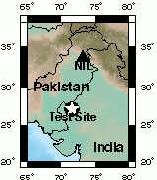 India's Nuclear Tests - Seismic Data
India's Nuclear Tests - Seismic Data
Contents One blast?  There is only seismic data from 'one' of the five tests conducted. This is from May 11. This does not mean the other two tests on May 11 were undetected. If all three detonations occurred at the same time at the same place on May 11 they would appear as one event in the seismic data. Reports from local villagers suggest three tremors within 5 seconds. This could be from three detonations separated by a couple of seconds or from the passage of different phases from 'one' event. Based on the information we have the tests were probably conducted within approximately 0.3 seconds. In terms of the seismic signal (around 1Hz) this is simultaneously. This means the effect of the events sum i.e. we expect to see one event with a yield equal to the sum of the yields of each device. No seismic evidence of the May 13 tests has been found to date. Both tests on this date were reported sub-kiloton by the Indian government. Local villagers were not evacuated (as they were on May 11), and did not feel any tremors. | |||||||||||||||||||
|
Location and magnitude The source of the seismic signal was located at the Pokhran test site (see map) by the National Earthquake Information Center (NEIC), run by the U.S. Geological Survey, and the Prototype International Data Center (pIDC). The pIDC is the for-runner to the IDC which will be set up for the Comprehensive Test Ban Treaty (CTBT). The time, location and magnitude of the event calculated by the pIDC and NEIC are shown in the table. The closest seismic station is NIL operated by IRIS 740 km (435 miles) from the Pokhran test site - see map below. |
| ||||||||||||||||||
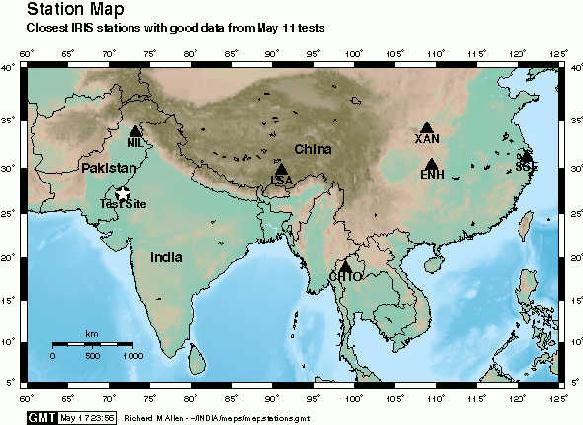
|
Yield According to Indian Scientists at their press conference on May 17 the blasts on May 11 had yields of 12, 43 and < 1 ktons. We would therefore expect to observe a yield of about 55 ktons, as we believe the blasts to have been simultaneous. We estimate the yield from the magnitude estimates. For a brief overview of how this is done follow me. Using a reasonable range of values for the constants in the yield equation for both the magnitude estimates of mb 4.7 and 5.3 we obtain yields in the range 1 to 25 ktons. This is less than half the yield claimed by Indian scientists. |
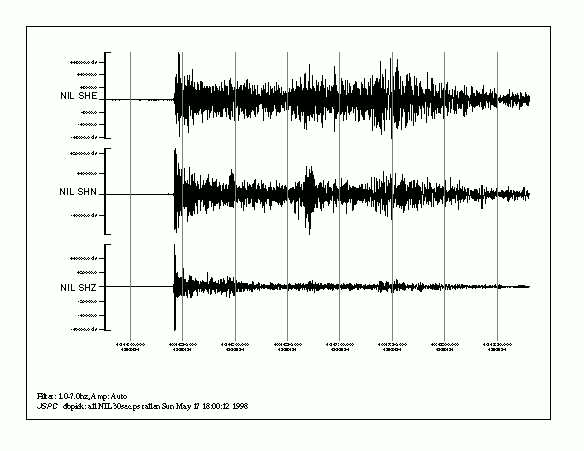
|
Waveform data Above is the three component data from NIL. The P arrival is clearly seen at approximately 10:15:30 (clearest on SHZ, the vertical component), S follows at approximately 10:16:40 (most clearly seen on SHN, the north-south component). Finally surface waves most clearly seen on SHE and SHN. Below is a blow-up of the of the P-arrival on the vertical component. There is a small pre-cursor (a couple of oscillations before the largest peak), which it has been speculated may be one of the other detonations. Such a pre-cursor is observed at NIL and LSA, but not the other stations. It seems more likely however that these pre-cursors are due to path effects, more specifically multipathing caused by the structure in the upper mantle which is particularly significant for stations out to 2500 km from the epicenter (NIL is ~740 km away, LSA is ~1920 km away). |
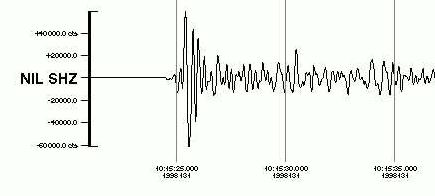
Below is the three component data from CHTO which does not show a per-cursor.
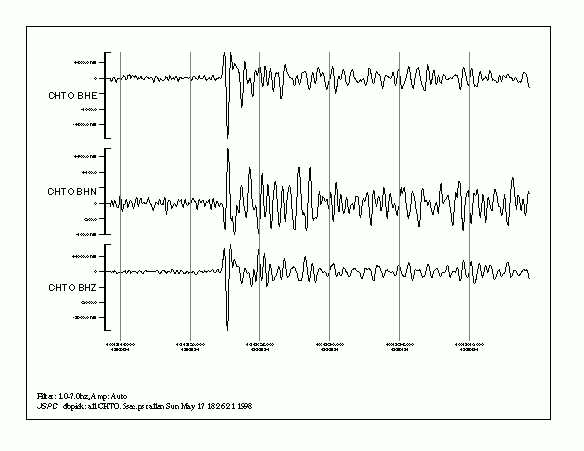
|
Data from GSN stations within 50 degrees of test site. All stations with good data are included, each link shows 70 sec of all available components around the P arrival. |
| Station | distance/azimuth (in degrees) |
| NIL | 6/11 |
| LSA | 17/76 |
| CHTO | 26/102 |
| XAN | 32/68 |
| ENH | 33/75 |
| OBN | 37/327 |
| SSE | 43/72 |
| DPC | 47/314 |
| KEV | 49/341 |
Click to download postscript versions of the NIL data: 30 sec 10 sec
Also check out...
[news reports] [index and links] [Pakistani tests] [The Nuclear Monitor]